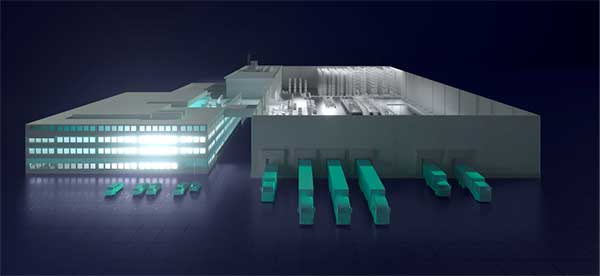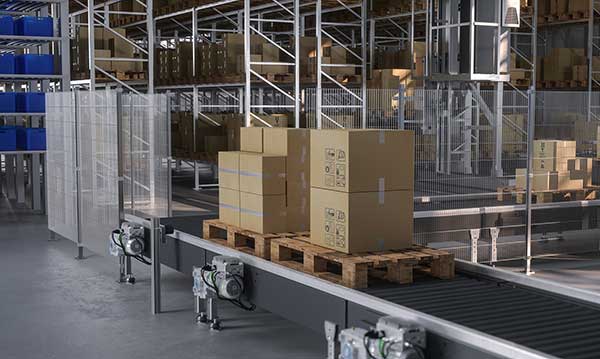Siemens recently formed a new vertical market dedicated to Intralogistics.

Siemens recently announced the formation of the new Intralogistics vertical that brings best-in-class material handling thought leadership, hardware automation, software and service solutions to customers in the United States. Siemens is leveraging its broad technology to address the market needs for digital transformation, cybersecurity, safety and sustainability. This new group will operate both as a vertical industry group and a horizontal business operation. It will reside within the Siemens Digital Industries — Motion Control business and functions in tandem with the organization’s existing additive manufacturing, aerospace, automotive, food-and-beverage, and other industry verticals.

Joel Thomas is the head of the Intralogistics vertical. Besides management of the group, Thomas will also work closely with trade associations who serve the intralogistics industry and will foster programs at Siemens to educate the next generation of engineers, programmers, software developers and plant operations personnel who will manage the warehouses of the future.
This new group will serve machine builders and end-customers alike. For example, using the Siemens TIA Portal, a warehouse facility or postal clearing house will be able to integrate all its motion control hardware, software systems and communications protocols, internal and external, as needed. Additionally, Siemens digital twin and simulation technologies allow a warehouse or manufacturing operation to test all the “what ifs” before taking action on a material handling challenge.
Further, notes Joel Thomas, “The goal for all companies should be smart manufacturing and automated material flow, which is adaptable to changing market and technology conditions. This is especially challenging in older brownfield operations, where the legacy equipment might not handle the needs of the company, tomorrow or even today.”
Predictive analytics and predictive maintenance will also be among the key drivers for the Siemens Intralogistics business, as it strives to offer users the needed system components to maximize productivity and to gather the data needed to monitor and maintain the operation. The biggest challenge for this new group, according to Thomas, is to identify and bring the necessary skills and solutions to the resident knowledge base for each customer. He notes this varies considerably based upon each company’s size and onboard skill sets.
Thomas also comments how sustainability, which involves energy consumption and the ability to anticipate what equipment and software will be needed in the future to keep the plant running at maximum efficiency, will be a critical factor in the service package provided to customers.

Lastly, with use of this digital-to-real world technology, the Intralogistics business will help companies achieve a more productive eco-system and, with various Siemens solutions and services, a homogenous environment in the future-proofing of their operations.
Siemens Digital Industries (DI) is an innovation leader in automation and digitalization. Closely collaborating with partners and customers, DI drives the digital transformation in the process and discrete industries. With its Digital Enterprise portfolio, DI provides companies of all sizes with an end-to-end set of products, solutions and services to integrate and digitalize the entire value chain. Optimized for the specific needs of each industry, DI’s unique portfolio supports customers to achieve greater productivity and flexibility. DI is constantly adding innovations to its portfolio to integrate cutting-edge future technologies. Siemens Digital Industries has its global headquarters in Nuremberg, Germany, and has around 75,000 employees internationally.
Siemens Corporation is a U.S. subsidiary of Siemens AG, a technology company focused on industry, infrastructure, transport, and healthcare. From more resource-efficient factories, resilient supply chains, and smarter buildings and grids, to cleaner and more comfortable transportation as well as advanced healthcare, the company creates technology with purpose adding real value for customers. By combining the real and the digital worlds, Siemens empowers its customers to transform their industries and markets, helping them to transform the everyday for billions of people. Siemens also owns a majority stake in the publicly listed company Siemens Healthineers, a globally leading medical technology provider shaping the future of healthcare. In addition, Siemens holds a minority stake in Siemens Energy, a global leader in the transmission and generation of electrical power. In fiscal 2022, which ended on September 30, 2022, Siemens Group USA generated revenue of $18.6 billion and employs approximately 45,000 people serving customers in all 50 states and Puerto Rico.
In this episode, I sat down with Beejan Giga, Director | Partner and Caleb Emerson, Senior Results Manager at Carpedia International. We discussed the insights behind their recent Industry Today article, “Thinking Three Moves Ahead” and together we explored how manufacturers can plan more strategically, align with their suppliers, and build the operational discipline needed to support intentional, sustainable growth. It was a conversation packed with practical perspectives on navigating a fast-changing industry landscape.